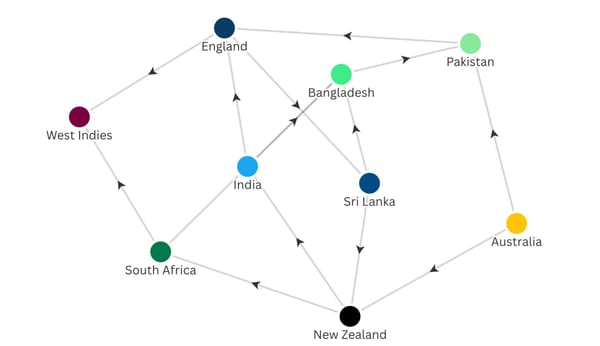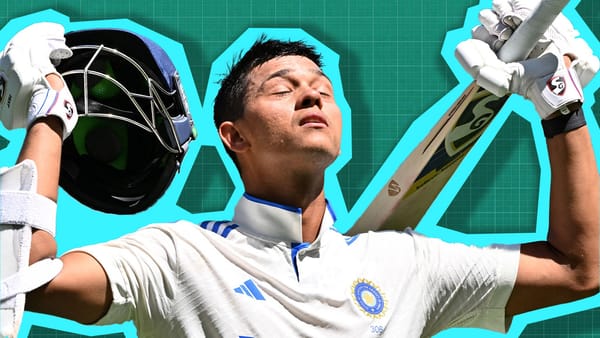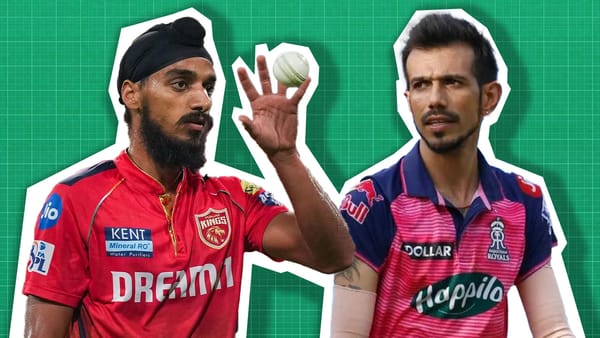Bowlers fight back in the powerplay
After the pace playing pandemic hits red-ball cricket, in limited overs, batters are getting a dry sore throat from the new nut.
Today was a good day to be an opening bowler in ODI cricket.
Jasprit Bumrah took a bucket for no runs. England looked as likely to survive him as a puppy would taking down Godzilla. He ended up with video game figures or the kind you get in dreams.
Then you had Malahide and New Zealand's seamers against Ireland. At one point Andy "The Pinch Blocker" McBrine must have missed a ball by nine inches.
Andy Balbirnie left a ball that bowled him. Then New Zealand went out to bat, and Mark Adair bowled Martin Guptill with a surprise straight full ball. And then he just pressed replay and did the same against Will Young next nut.
None of these things is that weird. While Malahide is a good batting pitch at times, it can also turn feral when it wants. And in Ireland, there are clouds. And Jasprit Bumrah is one of the world's best bowlers with any colour ball in any format.
But when I was watching this, I thought back to the IPL. In the latest tournament, teams also lost a lot of wickets in the powerplay.
When you watch as much cricket as me - often more than a game a day - sometimes you think you see patterns where you don't. It's just you watch three legcutters get wickets, and so you assume that is the new trend. Not just a fluke you saw in one day. And you look them up and there is absolutely nothing in it.
So I did some research, and wow, this is a trend, isn't it.

This isn't just Jasprit on one and Malahide coughing up a grey day and a helpful pitch. Teams are finding it hard when opening in ODI cricket.
And this is happening when ODI averages went above Test for a prolonged period for the first time ever.

Part of that was the dip by Test cricket, but also ODI batters had been getting better at not being dismissed. With all these wickets up the top, there now does seem to be a dip from the ODI players. And I think the two are related.
Something else also happened in 2019 when this all started to be more noticeable. That is the year that Kookaburra upgraded their cricket ball, essentially making the seam slightly better. If you are a long-term follower of mine, you will be aware I am now about to tell you how that helps the wobble ball; therefore, people are bowling it more.
Bumrah's first wicket was an inswinger to Jason Roy. His second wicket had a wobble seam to Bairstow. Mohammad Shami dismissed Stokes with an old fashion swinger. (although the seam was not perfect, so maybe it was a wobble too, but I lean towards no).
But if you head back over to Malahide we see a very similar pattern. Matt Henry moved two balls back in a long way. The first struck Paul Stirling plumb in front.
But the one that was more like a Test match was Andy Balbirnie's. He received a length ball outside off stump that he decided to leave. It was a brute of a ball; I don't care what format you are playing, or what shot (if any in his case) you try. You're in trouble if someone moves the ball this much with it ending up at the top of off.
It wasn't common to see balls like this in recent ODI cricket. Even with two balls, seam wasn't that prevalent in limited-overs over the last decade or so.
From the look of both of these deliveries, they were both likely wobble balls. But even if they aren't. They're certainly jagging back violently off the seam like the batter made fun of their mums.
But then Mark Adair came out to bowl and delivered two full balls. I would love to tell you that they swung massively, as Adair can do. But these seem really straight to me. The first to Martin Guptill, who seems utterly shocked to get a delivery like this, was out before it was clear he'd taken his guard.
Then Will Young arrived and if you were watching on TV, you would have thought it was a replay when the ball went through his defence.
Now these weren't wobble, or at least, that wasn't what got the wicket. This was straight and full surprise balls that took unset batters.
But if you look at the whole picture, we know that very new white balls swing. That has always been the case. But bowling has started to lean more against swing bowling in red-ball cricket, so there are fewer bowlers to practice that art with the white nut.
If you look last three years, you still see a lot of swing bowlers at the the best averages in the powerplay.

But you also see Josh Hazlewood, and other seam dependent guys there. That isn't what used to happen. It use to be just the swing bowlers. David Willey, Jason Behrendorff, and Rumman Raees of the world.
But what this means is that seamers and swingers now can operate at the top. And if you re wondering if this has happened in T20. It has.

Though I'd say the effect is less.
If you look at T20 in the first four overs - as batters tend to bash the crap out of the ball there earlier.

You can see it is slightly more pronounced.
This all means that at the top of the innings, you can hit the seam, try a wobble ball or swing it. That's a huge change from the swing-only period of only a couple of years ago.
So this is a white ball change, partly from the improved kookaburra seam and a little from everyone's favourite disruptor the wobble ball. This feels longer than a blip, and it feels like something has happened that was subtle enough we didn't all notice it.
But one way or another, the bowlers are bouncing back in the powerplay. And you don't have to be Jasprit Bumrah to take advantage of it. Although, Mark Adair is fairly good too. As Martin Guptill and Will Young would surely agree with.




